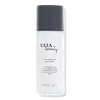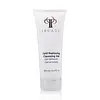What's inside
What's inside
 Key Ingredients
Key Ingredients

No key ingredients
 Benefits
Benefits

 Concerns
Concerns

 Ingredients Side-by-side
Ingredients Side-by-side

Water
Skin ConditioningPEG-32
HumectantButylene Glycol
HumectantPEG-6
HumectantDisodium Cocoamphodiacetate
CleansingPhenoxyethanol
PreservativeSodium Chloride
MaskingEthylhexylglycerin
Skin ConditioningTetrasodium EDTA
Glycerin
HumectantBenzoic Acid
MaskingChlorphenesin
AntimicrobialCucumis Sativus Fruit Extract
EmollientSorbic Acid
PreservativeMaltodextrin
AbsorbentAloe Barbadensis Leaf Juice
Skin ConditioningChamomilla Recutita Flower Extract
MaskingSodium Hyaluronate
HumectantWater, PEG-32, Butylene Glycol, PEG-6, Disodium Cocoamphodiacetate, Phenoxyethanol, Sodium Chloride, Ethylhexylglycerin, Tetrasodium EDTA, Glycerin, Benzoic Acid, Chlorphenesin, Cucumis Sativus Fruit Extract, Sorbic Acid, Maltodextrin, Aloe Barbadensis Leaf Juice, Chamomilla Recutita Flower Extract, Sodium Hyaluronate
Water
Skin ConditioningSodium Lauryl Sulfoacetate
CleansingSodium Chloride
MaskingSodium Methyl 2-Sulfolaurate
CleansingPanthenol
Skin ConditioningHydroxypropyl Methylcellulose
Emulsion StabilisingAllantoin
Skin ConditioningDisodium 2-Sulfolaurate
CleansingLaminaria Japonica Extract
Skin ProtectingMalva Sylvestris Leaf Extract
Skin ConditioningPlukenetia Volubilis Seed Extract
Skin ConditioningButylene Glycol
HumectantChlorphenesin
AntimicrobialBenzoic Acid
MaskingSorbic Acid
PreservativeCaprylyl Glycol
EmollientPhenoxyethanol
PreservativeHexylene Glycol
EmulsifyingParfum
MaskingWater, Sodium Lauryl Sulfoacetate, Sodium Chloride, Sodium Methyl 2-Sulfolaurate, Panthenol, Hydroxypropyl Methylcellulose, Allantoin, Disodium 2-Sulfolaurate, Laminaria Japonica Extract, Malva Sylvestris Leaf Extract, Plukenetia Volubilis Seed Extract, Butylene Glycol, Chlorphenesin, Benzoic Acid, Sorbic Acid, Caprylyl Glycol, Phenoxyethanol, Hexylene Glycol, Parfum
Ingredients Explained
These ingredients are found in both products.
Ingredients higher up in an ingredient list are typically present in a larger amount.
Benzoic Acid is used to preserve and adjust the pH of products.
The antimicrobial property of Benzoic Acid helps elongate a product's shelf life. Its main role is to reduce fungi growth and is not found to be effective at fighting bacteria. Therefore Benzoic Acid is always added along with other preservatives.
In its pure form, Benzoic Acid looks like a white crystalline solid. It has slight solubility in water.
The name of Benzoic Acid comes from gum benzoin, which used to be the sole source of deriving this ingredient. Benzoic Acid is the most simple aromatic carboxylic acid.
Benzoic Acid is naturally occuring in strawberries, mustard, cinnamon, and cloves. It has a slight scent but is not considered to be a fragrance.
Learn more about Benzoic AcidButylene Glycol (or BG) is used within cosmetic products for a few different reasons:
Overall, Butylene Glycol is a safe and well-rounded ingredient that works well with other ingredients.
Though this ingredient works well with most skin types, some people with sensitive skin may experience a reaction such as allergic rashes, closed comedones, or itchiness.
Learn more about Butylene GlycolChlorphenesin is a synthetic preservative. It helps protect a product against bacteria in order to extend shelf life. In most cases, Chlorphenesin is paired with other preservatives such as phenoxyethanol and caprylyl glycol.
Chlorphenesin is a biocide. This means it is able to help fight the microorganisms on our skin. It is also able to fight odor-releasing bacteria.
Chlorphenesin is soluble in both water and glycerin.
Studies show Chlorphenesin is easily absorbed by our skin. You should speak with a skincare professional if you have concerns about using Chlorphenesin.
Learn more about ChlorphenesinPhenoxyethanol is a preservative that has germicide, antimicrobial, and aromatic properties. Studies show that phenoxyethanol can prevent microbial growth. By itself, it has a scent that is similar to that of a rose.
It's often used in formulations along with Caprylyl Glycol to preserve the shelf life of products.
Chances are, you eat sodium chloride every day. Sodium Chloride is also known as table salt.
This ingredient has many purposes in skincare: thickener, emulsifier, and exfoliator.
You'll most likely find this ingredient in cleansers where it is used to create a gel-like texture. As an emulsifier, it also prevents ingredients from separating.
There is much debate on whether this ingredient is comedogenic. The short answer - comedogenic ratings don't tell the whole story. Learn more about comegodenic ratings here.
The concensus about this ingredient causing acne seems to be divided. Research is needed to understand if this ingredient does cause acne.
Scrubs may use salt as the primary exfoliating ingredient.
Learn more about Sodium ChlorideSorbic Acid is a preservative. It is the most commonly used food preservative in the world.
Sorbic Acid is a natural antibiotic and highly effective at preventing the growth of fungus. It is less effective against bacteria.
Potassium Sorbate, another commonly-used preservative, is the potassium salt of Sorbic Acid.
Sorbic Acid may worsen eczema. We recommend speaking with a professional if you have any concerns.
Potassium sorbate and sorbic acid can be found in baked goods, cheeses, dried meats, dried fruit, ice cream, pickles, wine, yogurt, and more.
Learn more about Sorbic AcidWater. It's the most common cosmetic ingredient of all. You'll usually see it at the top of ingredient lists, meaning that it makes up the largest part of the product.
So why is it so popular? Water most often acts as a solvent - this means that it helps dissolve other ingredients into the formulation.
You'll also recognize water as that liquid we all need to stay alive. If you see this, drink a glass of water. Stay hydrated!
Learn more about Water